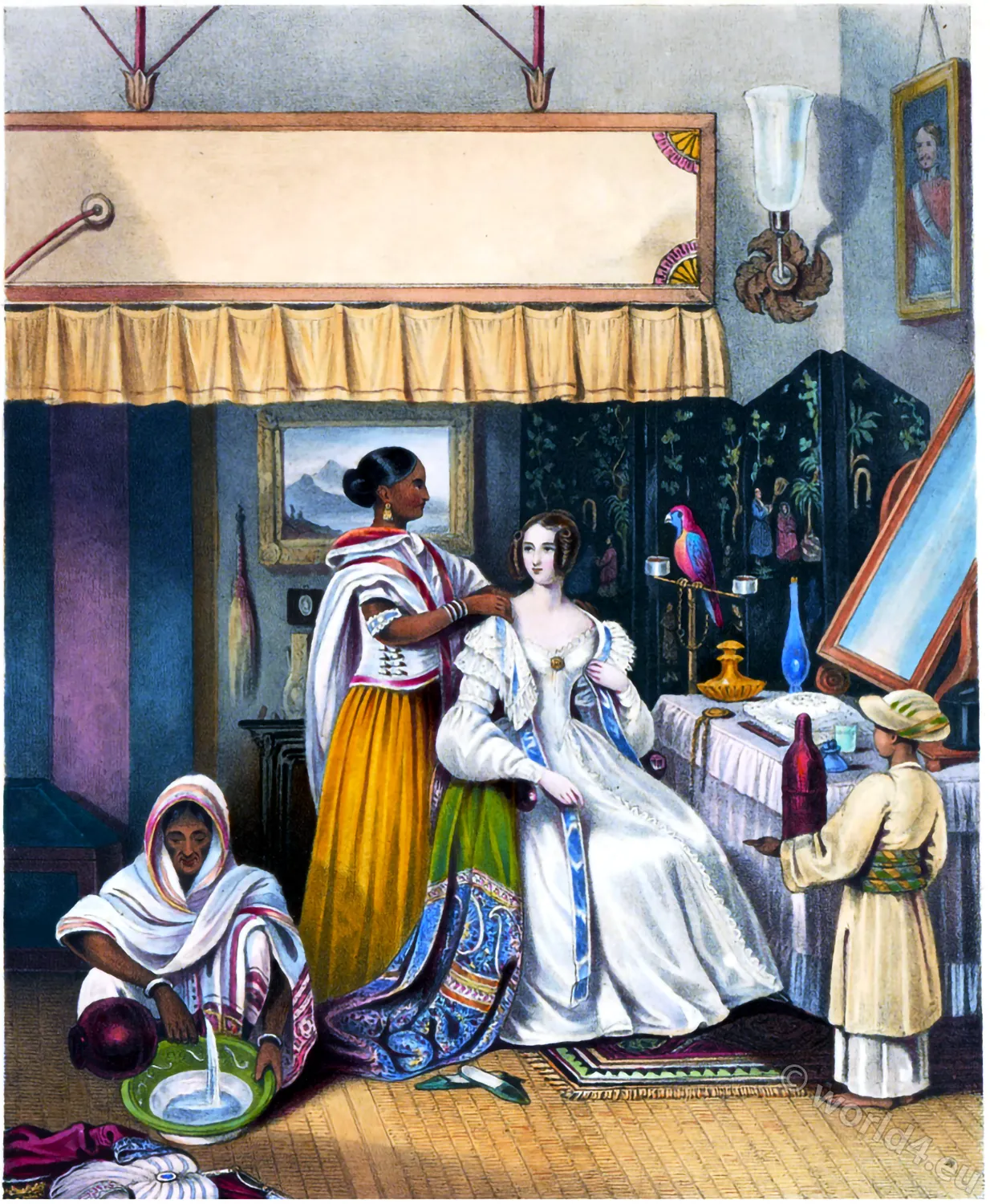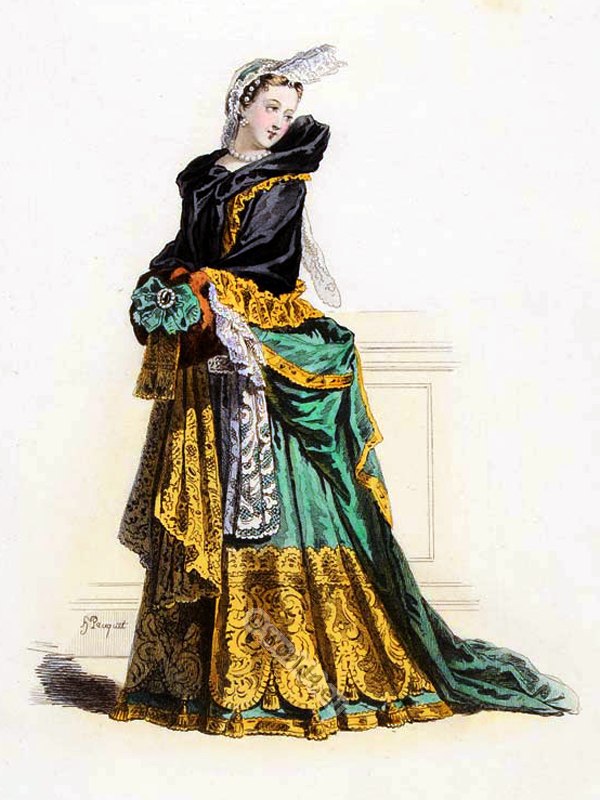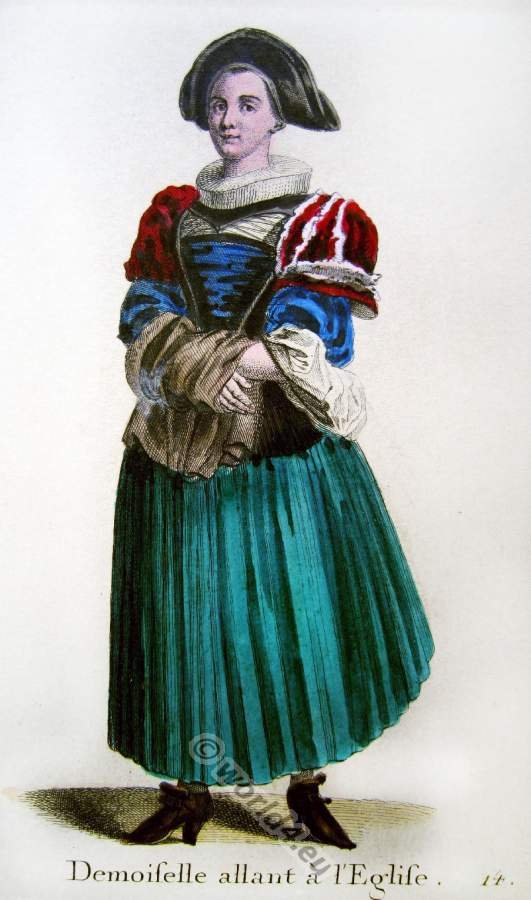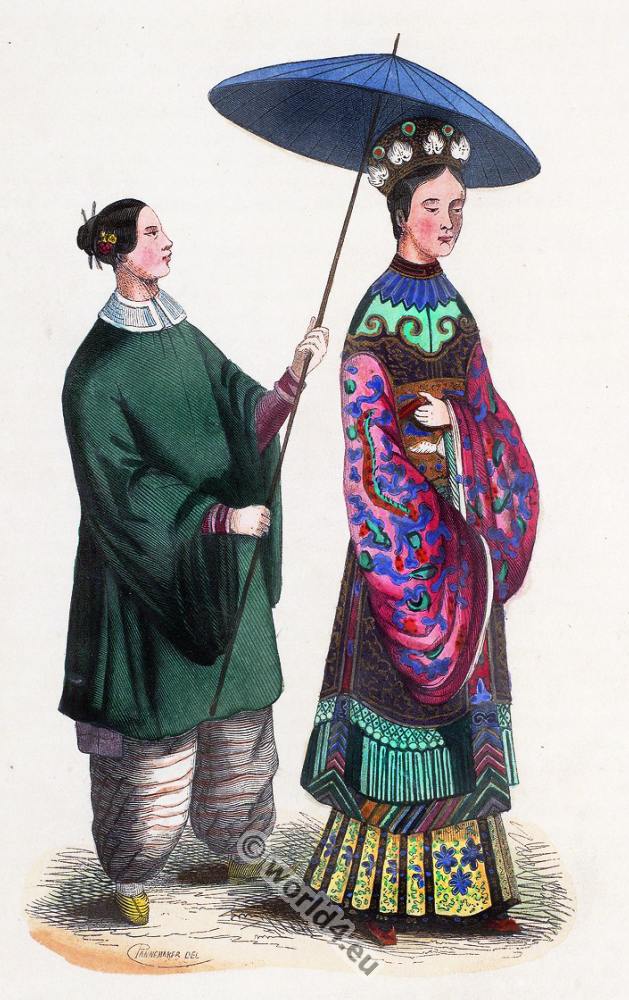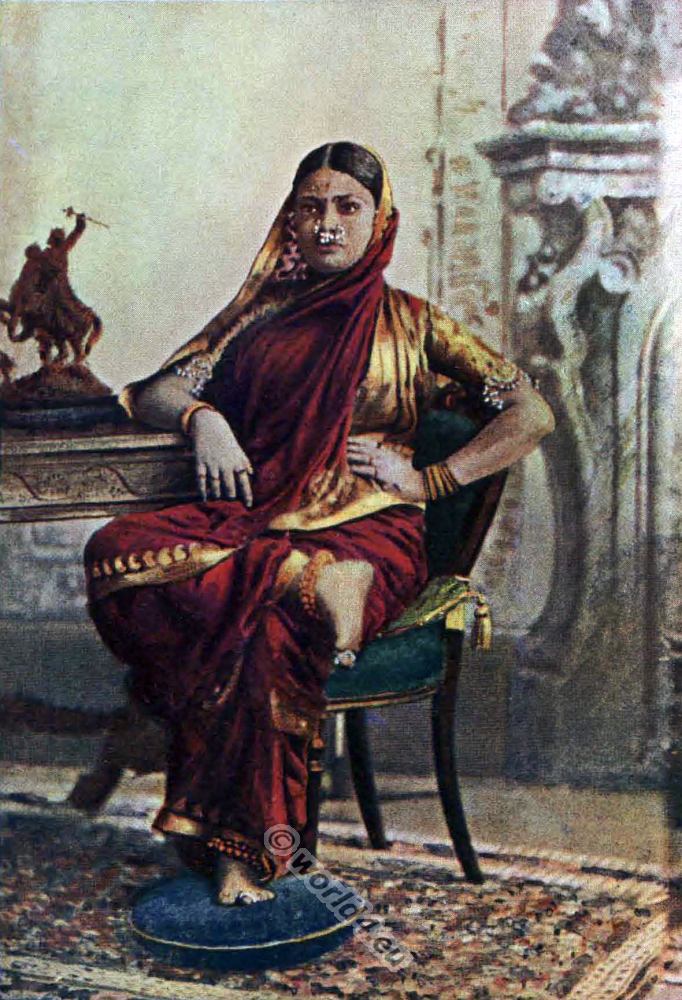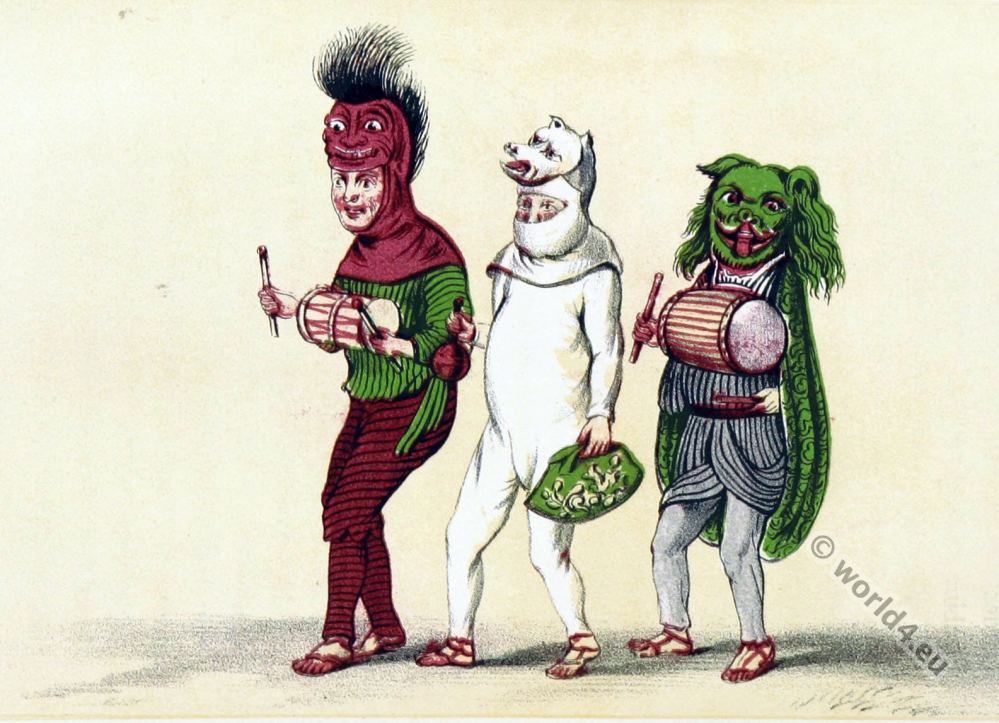
LADY’S ROBE (KOSODE). BY OGATA KŌRIN.
FROM A TWILLED SILK GARMENT, ORNAMENTED WITH AUTUMNAL FOLIAGE AND FLOWERS IN COLOURS.
(Size of original, length 4 feet 10½ inches; half-breadth, from middle of back to end of sleeve, 1 foot 9½inches; depth of sleeves, 1 foot 4¼ inches.)
OWNED BY THE IMPERIAL MUSEUM, TOKYO.
The robe which is shown here, formerly belonged to the Fuyuki family, of Fukagawa, Tokyo, and was carefully preserved by them until recently, when it was transferred to the Imperial Museum. The original name of the Fuyuki family was Ueda.
One of the earliest known members of the family, Naotsugu, began life as a lumber merchant at Kayabacho, Nihonbashi, Yedo (now Tokyo), and the business gradually prospered until, during the life of his son, Masachika, it had expanded to such proportions that eventually the head of the family became one of the merchant princes of Yedo; those whose names may be counted off on one’s fingers. Business affairs often called Masachika to Kyoto, and he died there in the 16th year of Genroku (1703) at the age of fifty-one.
His son, Masasato, succeeded to the business and became even wealthier than his father: he built a large villa at Mannencho, Fukagawa, which subsequently became the principal home of the family when the old house in Kayabacho was destroyed by fire. The present Fuyukicho is the identical site of the old house.
Kōrin, having incurred the displeasure of the Kyoto authorities through what they deemed an unwonted display of extravagance ,was banished from the city and went to Yedo, where, at the invitation of the Fuyuki family, he took up his residence in the villa at Mannencho.
During that time he worked assiduously at his art, and produced many beautiful examples of his mysterious skill for the gratification of his hosts; therefore, it is alleged that a number of Kōrin’s precious works were preserved in the family until about the time of the Restoration (1868).
The exquisite robe which is here reproduced is one of those treasures, and it was probably painted for Masasato’s wife. The studies which Kōrin made for the details of the representations of foliage and flowers, are likewise preserved in the Museum, together with the robe itself, and from these we can readily see that this beautiful work was not the result of caprice, but must have been designed most seriously and the details wrought out with earnest thought. The material is a twilled silk, upon which are painted small chrysanthemums, lespedeza bicolor, platycodon grandiflorum, etc., which are all autumnal grasses and flowers.
The colours used are liquid-gold, white-lead, verdigris, etc. Kōrin’s consummate skill is evinced in the perfect harmony of details; in the firm, true, light touch of the brush; and by the purity ofthe colour scheme: from all of these, we see at once that this furnishes on ideal example of the kosode during the luxurious Genroku period. It is undoubtedly true that at the time when Kōrin painted this robe, the fashions of the whole country were tending towards extreme elegance; but while many rich merchants and wealthy families were trying to dress their ladies in beautiful fabrics and dainty robes, such as embroidered brocades, crapes, gauzes, etc., the wife of Masasato, who was dressed in twilled silk upon which the great Korin had displayed his mysterious ability, was more sumptuously apparalled than were those who wore garments that could not rival this robe.
We give the front and back of the garment in collotype, for the purpose of showing the whole lovely design; but in order that the beauty of the details may be fully appreciated we give, besides, the front of one sleeve in a coloured wood-cut, printed upon a piece of twilled silk, of the same material as the original, in order that tire running, light touch of the brush and the effective handling of colours may be made quite clear. This combination will, we are sure, enable all persons to appreciate the elaborate and painstaking care which the artist bestowed upon the whole garment.
Of late years the name kosode has been restricted to cotton-quilted silk clothing; but in the old days it was applied to the robes worn under the outside one, no matter whether they were of a single-thickness, doubled, or quilted: because, in those days, a long, flowing garment, called uchi-kake, was put on over the under robes, for the purpose of covering them. Necessarily, the sleeves of the uchi-kake were made very large, and those of the kosodé (garments worn under the uchi-kake) were narrowed a little: this is why we call this robe kosodé, literally: “ Small Sleeves.”
The kosode, with such ornamentation as the one before us, was at former periods, generally worn at the time of some ceremony, or festival, or certain public rites (of course the uchi-kake was put over it). But in as much as the custom of wearing the uchi-kake has become obsolete, the name kosode has come to be limited to quilted-silk garments only. At any rate the present robe is the best example of kosode worn by ladies at the time of Genroku. The Genroku period spanned the years from September 1688 to March 1704.
Ogata Kōrin or Ichinojō, 尾形 光琳, born 1658 in Kyoto, died 2 June 1716 in the same city, household names: Kariganeya Tōjûro, Katsuroku, brush names: Kōrin, Hōshuku, Jakumel, Dōsû, Kansei, Iryō, Seiseidō, Chōkōken, was a Japanese painter, landscape illustrator, lacquerer and textile designer, older brother of the painter and ceramist Ogata Kenzan. The work of both of them belongs to the Rimpa school.
Source: Masterpieces selected from the Ukiyoyé school by Shiichi Tajima (1869-1924). Tokyo, Shimbi Shoin, 1906.
Discover more from World4 Costume Culture History
Subscribe to get the latest posts sent to your email.



